
Seed Starting Mix vs. Potting Soil: What’s the Difference and Which One to Choose?
When it comes to growing healthy plants 🌿, the right soil can make all the difference 🌼. But with so many options available 🤔, how do you know which one to choose❓ Seed starting mix vs. potting soil—two essential growing mediums—are often used interchangeably 🔄, but they serve very different purposes 🎯. Whether you’re starting seeds indoors 🌱, transplanting seedlings 🌸, or simply caring for established plants 🪴, understanding the differences between these two types of soil is crucial for success ✅. In this article 📖, we’ll break down the key distinctions ✂️, helping you decide which one is best suited for your gardening needs 🌻.
Table of Contents
ToggleWhat is Seed Starting Mix? 🌱
Seed starting mix is a specially formulated potting mix designed to provide the ideal environment for seedlings to germinate and grow 🌱✨. Unlike regular potting soil, seed starting mix is lightweight 🪶, finely textured, and free from fertilizers and additives that could overwhelm young plants 🌸. This makes it the perfect medium for nurturing seeds from sprout to early growth stages 🌿.
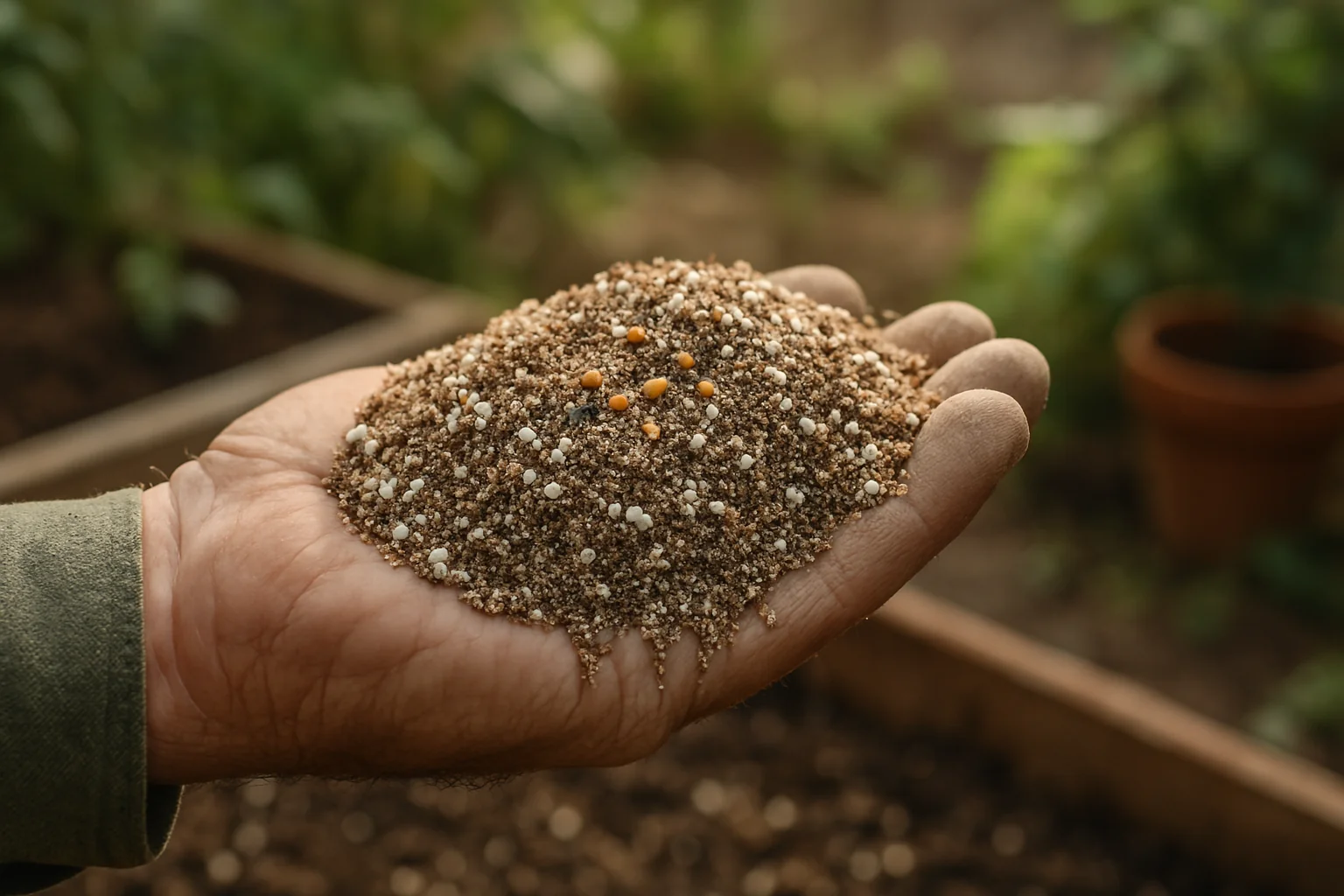
The main ingredients in a high-quality seed starting mix typically include peat moss, coconut coir 🥥, perlite, and vermiculite 🌾. These materials create a loose, well-draining texture that prevents waterlogging 🚫💧 while retaining just enough moisture for seeds to thrive 💦. The absence of soil and heavy fertilizers also reduces the risk of damping-off, a fungal disease that affects delicate seedlings 🚫🍄.
Using the right seed starting mix is crucial because it encourages proper root development and strong, healthy seedlings 💪🪴. A poor mix can result in slow germination 🐢 or weak plants that struggle to establish themselves later on 😓.
In short, a seed starting mix is an essential tool 🧰 for gardeners looking to give their seeds the best chance of success by providing a controlled, nutrient-rich environment from the very beginning 🌼🌞.
What is Potting Soil? 🌼🪴
Potting soil, also known as potting mix, is a specially formulated blend designed for growing plants in containers 🌿. Unlike garden soil, potting soil is lighter, well-draining, and nutrient-rich, providing an ideal environment for plants to thrive indoors or in pots.
Key ingredients typically include peat moss, perlite, vermiculite, and sometimes compost or bark. These components work together to improve aeration, moisture retention, and root health 🌱. Potting soil is tailored to ensure plants receive proper support, without being too compacted, which can suffocate the roots.
It’s important to choose the right type of potting soil based on your plant’s needs—some plants may require mixes with added nutrients, while others, like succulents, thrive in drier, more draining soils 🌵.

In summary, potting soil is the foundation for healthy container gardening. It ensures that your plants get the right balance of moisture, nutrients, and oxygen to grow strong and vibrant 🌸.
Key Differences Between Seed Starting Mix vs. Potting Soil 🪴🌱
When deciding between seed starting mix and potting soil, it’s essential to understand their distinct purposes and characteristics 🌿. Here’s a breakdown to help you choose the right one for your gardening needs 🌼:
1️⃣ Composition
🌱 Seed Starting Mix: Typically made from peat moss, vermiculite, and perlite, it’s lightweight, sterile, and free from fertilizers. This mix is specifically designed to provide an ideal environment for seed germination 🌱.
🪴 Potting Soil: Often contains a richer blend of ingredients like compost, organic matter, and nutrients. Potting soil supports plant growth and provides the necessary nutrients once seeds have sprouted 🌸.
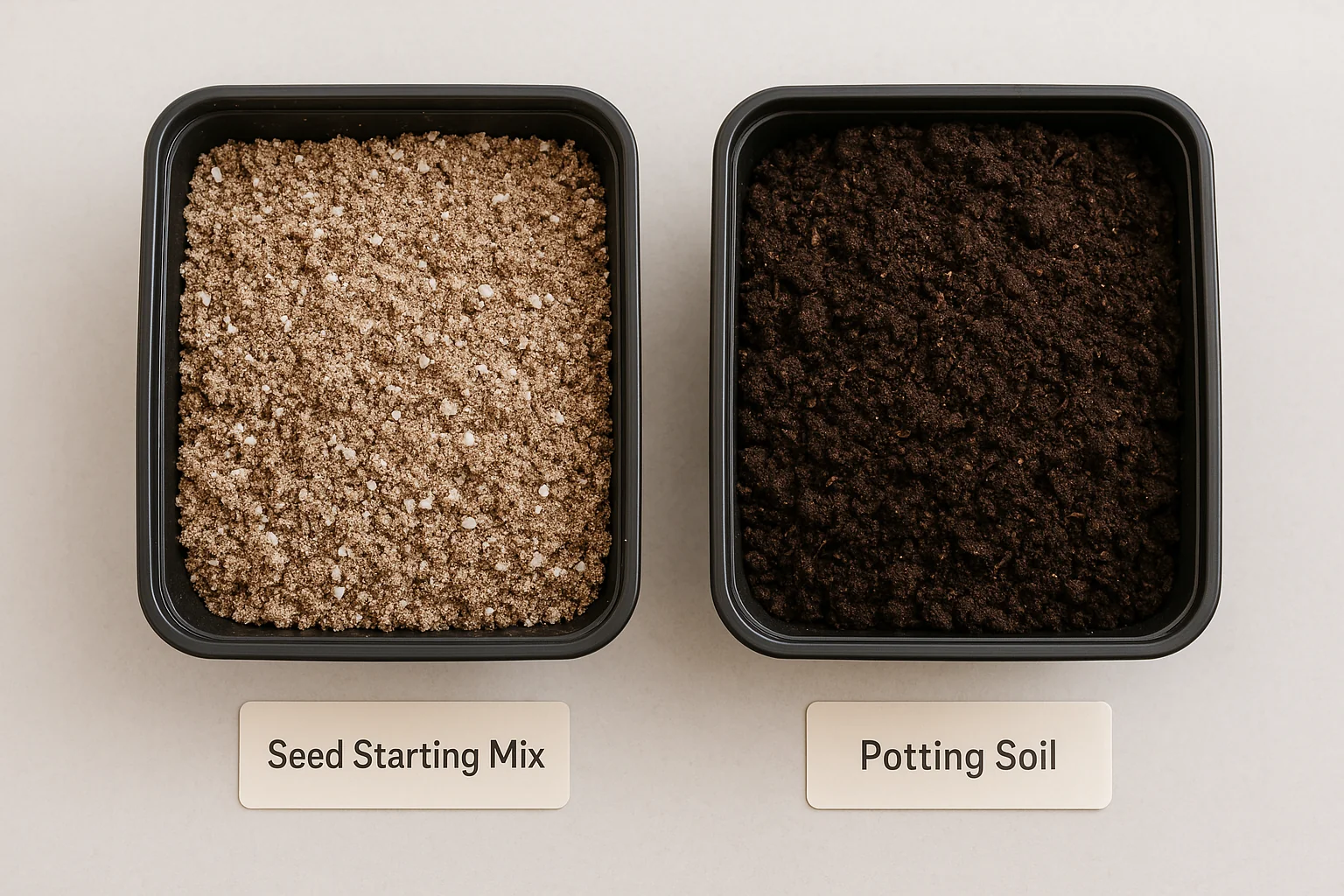
2️⃣ Nutrient Content
🌱 Seed Starting Mix: Contains little to no nutrients. This is intentional, as seedlings rely on the initial energy stored in their seeds until they are ready to be transplanted 🌱.
🪴 Potting Soil: Loaded with nutrients to sustain the plant through its growth stages 💪. It often includes fertilizers or slow-release nutrients that help plants thrive after the seedling stage 🌿.
3️⃣ Drainage and Aeration
🌱 Seed Starting Mix: Provides excellent drainage and aeration 💧, which is crucial for germination. The loose texture prevents waterlogging, which could cause seeds to rot.
🪴 Potting Soil: While it also drains well, it’s typically heavier and more compact than seed starting mix. This helps support larger plants as they mature 🌱.
4️⃣ Use Case
🌱 Seed Starting Mix: Best for planting seeds and nurturing them until they develop into strong seedlings 🌱. It’s ideal for starting plants indoors.
🪴 Potting Soil: Perfect for transplanting seedlings or for use with established plants in containers, raised beds, or larger garden spaces 🌼.
Choose 🌱 seed starting mix for germinating seeds and 🪴 potting soil for transplanting seedlings and growing mature plants 🌸. Understanding these differences ensures your plants get the right start and healthy growth 🌞.
Which One Should You Choose for Your Plants? 🌼🪴
When deciding which option is best for your plants, it’s important to consider a few key factors that can make a big difference in their growth and overall health 🌱. Here’s how to determine which choice will benefit your plants the most:
Plant Type and Growth Requirements🌿
Different plants have different needs 🌸. For instance, some plants prefer well-draining soil, while others thrive in moist, rich soil. Be sure to match the conditions of your growing medium or environment to the plant’s needs. For example, if you’re growing succulents 🌵, opt for a soil mix with good drainage to prevent root rot.
Environmental Conditions 🌞
The amount of sunlight, temperature, and humidity your plants need plays a huge role in choosing the right type of care ☀️. If your plants are indoors, look for options that accommodate lower light and higher humidity, such as those designed for houseplants 🌿. Outdoor plants may need more robust care or adjustments for extreme weather.
Ease of Maintenance🛠️
Some options require less upkeep, while others may need frequent monitoring. If you’re looking for something low-maintenance, choose plants known for being hardy and adaptable 🌵, like succulents or hardy shrubs. For plants that need extra care, be prepared to provide more attention 💧.
Soil and Fertilization Needs 🌱
Different plants have different soil pH and nutrient requirements. If you’re growing plants that need more acidic soil, like blueberries 🫐, make sure to choose soil amendments designed for that purpose. Likewise, ensure the fertilization options you choose match the plant’s growth cycle 🌿.
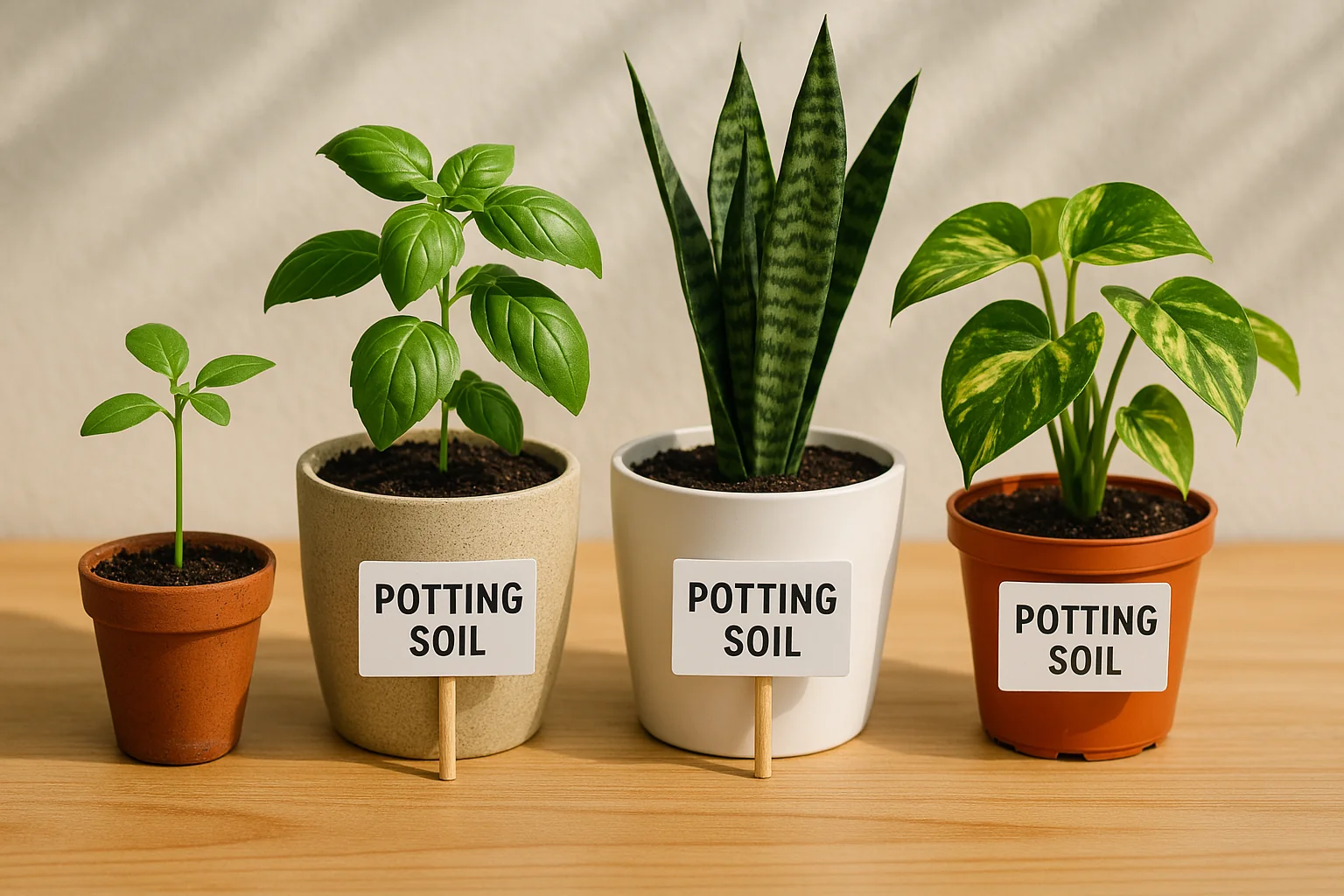
By considering these factors, you’ll be able to select the right care for your plants, ensuring they thrive and flourish 🌷. Make informed choices based on your plant’s specific needs, and you’ll see better results in your garden or home 🏡.
Can You Use Seed Starting Mix for Potting Plants? 🌱
While seed starting mix is designed to support seed germination with its light, airy texture, it’s not the ideal choice for potting plants long-term 🌿. Here’s why:
Nutrient Deficiency 🔋
Seed starting mix typically lacks the nutrients that potted plants need for healthy growth 🌱. It’s formulated to encourage seedling development, not sustained growth, so you’ll need to supplement with fertilizer when using it for potting 🌿.
Poor Drainage 💧
Although seed starting mix drains well, it can dry out too quickly once plants mature. Potting mixes contain a balance of materials like peat and perlite to provide better water retention, which is important for adult plants 🌼.
Soil Structure 🌿
As plants grow, they need a mix that can support root development and prevent compaction 🌱. Potting mixes usually have added ingredients like compost or bark, which help with aeration and root expansion. Seed starting mix doesn’t offer this structure 💚.
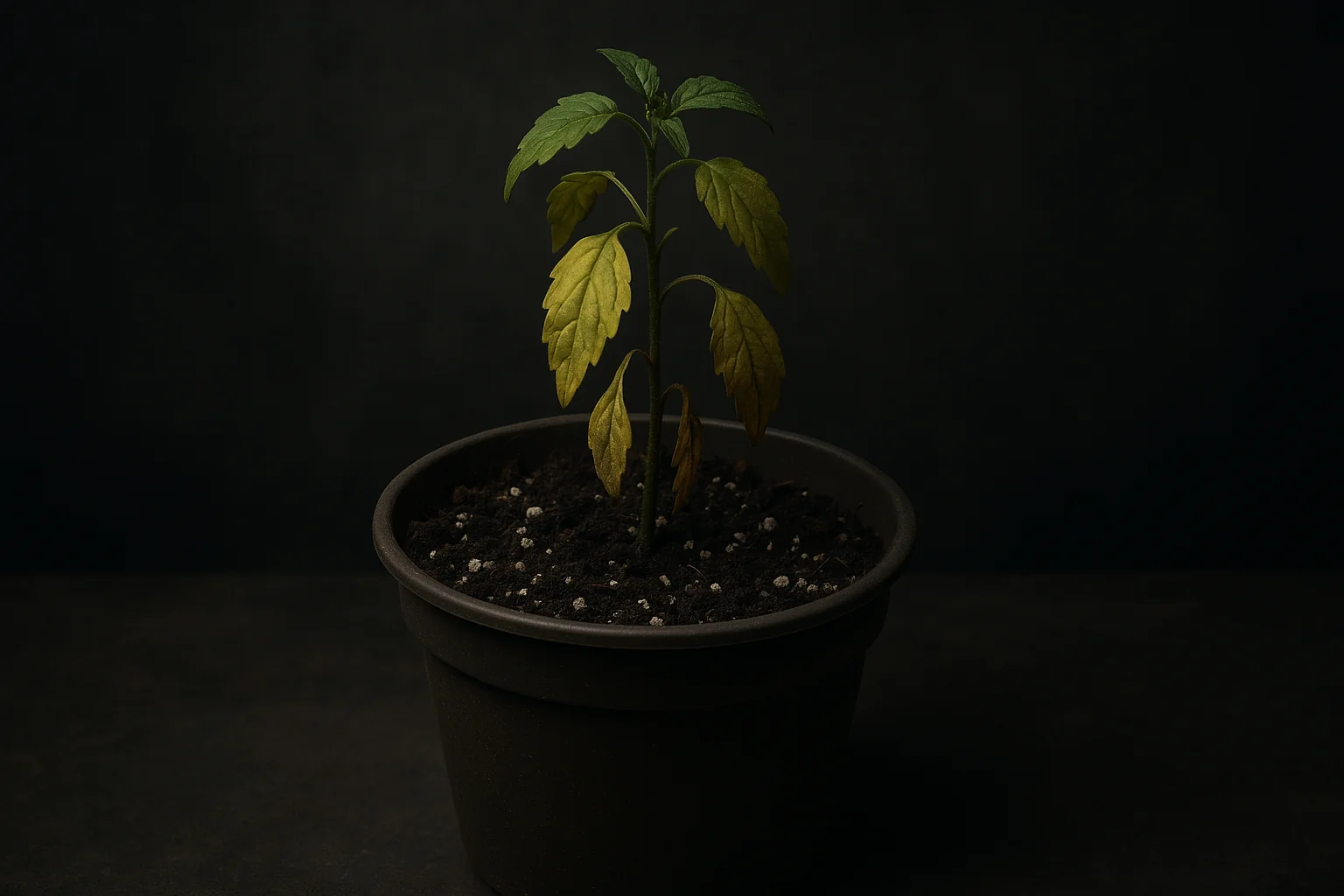
You can use seed starting mix for potting plants in the short term, especially for young plants 🌱, but it’s not ideal for long-term growth. For healthy, thriving plants 🌸, it’s best to use a proper potting mix tailored to the specific needs of the plant 🌿.
Common Mistakes to Avoid 🌱
When growing a Tomatillo plant, it’s easy to make a few missteps. To help you achieve a healthy, productive plant, here are some common mistakes to avoid:
Planting Too Early or Late 🌼
Tomatillos thrive in warm temperatures. Planting too early, when the soil is still cold, can delay growth 🌱. Likewise, planting too late may not allow the plant to mature before the cold weather arrives ❄️. Wait until the threat of frost has passed, and the soil temperature is consistently warm ☀️.
Not Providing Enough Space 🌿
Tomatillo plants grow tall and wide 🌳. Crowding them can stunt their growth 🌱. Ensure each plant has enough space (about 3 feet apart) to spread out and receive plenty of sunlight 🌞.
Over or Underwatering 💧
Consistent moisture is essential for Tomatillo plants 🌱, but overwatering can lead to root rot 🪦. On the other hand, under-watering will stress the plant, reducing fruit production 🍅. Water when the top inch of soil feels dry but avoid soggy conditions 🌻.
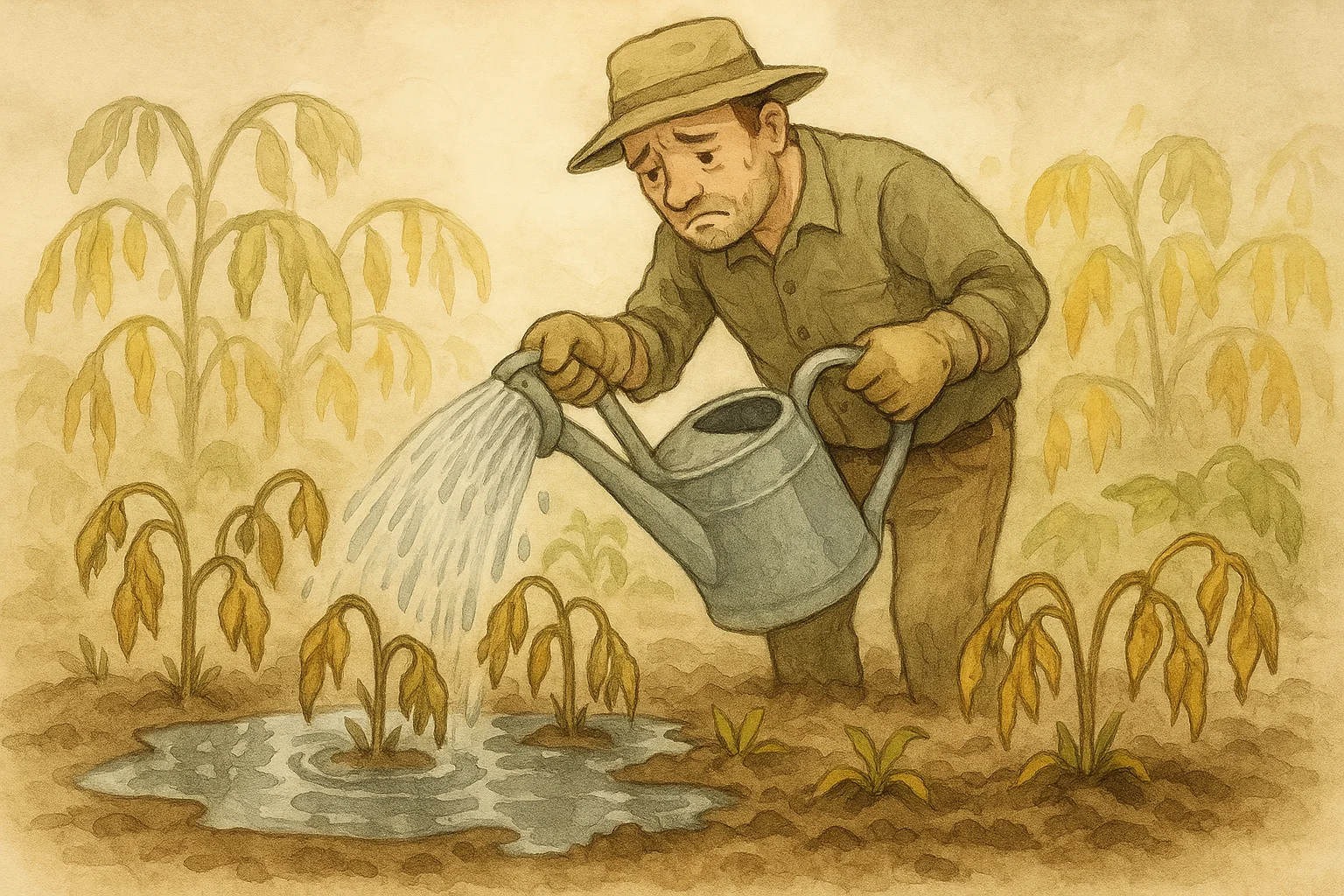
Ignoring Pollination Needs 🐝
Tomatillo plants are self-pollinating but need to be planted in pairs or groups to produce fruit 🍇. Don’t skip this step; planting at least two Tomatillo plants will improve pollination and yield 🌿.
Neglecting Soil Quality 🪴
Tomatillos prefer rich, well-drained soil 🌱. Poor soil can lead to weak plants and fewer fruits 🍅. Before planting, amend the soil with compost or organic matter to ensure healthy growth 🌼.
Forgetting to Support the Plants 🌿
As Tomatillo plants grow tall 🌳, they need support to prevent breaking under the weight of their fruit 🍅. Use stakes or cages to keep the plants upright and healthy 🌱.
Choosing the right soil is crucial for the success of your plants 🌿, whether you’re starting seeds indoors in containers 🪴. While seed starting mix vs. potting soil may seem like a subtle distinction, each has a specific purpose that directly impacts the health and growth of your plants 🌻.
Final Thought 🌱
Seed starting mix provides the ideal sterile, well-draining environment for young seedlings to thrive 🌿, while potting soil offers the nutrients and moisture retention needed for established plants 🌸. When comparing Seed Starting Mix vs. Potting Soil, it’s important to understand their unique roles in plant care. By understanding the differences and using each for its intended purpose, you’ll give your plants the best possible start and support throughout their growth stages 🌱.
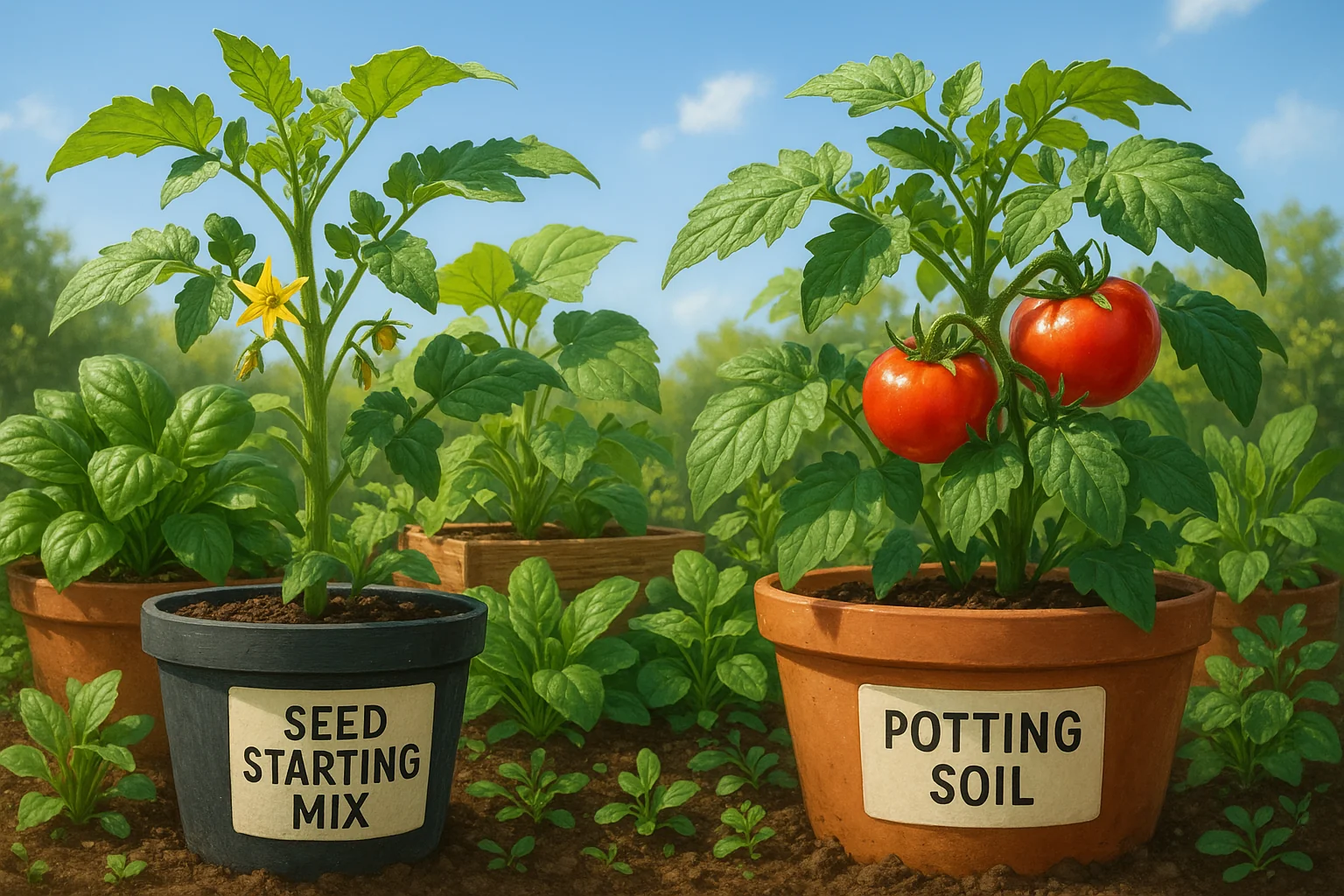
Remember, gardening is about experimenting and learning as you go 🌼. So, choose the right mix for your needs, and watch your plants grow strong, healthy, and vibrant 🌿. Happy planting! 🌻
Frequently Asked Questions (FAQ)
What is the main difference between seed starting mix and potting soil?
The main difference lies in their composition and purpose. Seed starting mix is a light, sterile mix designed for starting seeds, providing good drainage and a disease-free environment for germination. Potting soil, on the other hand, is heavier, nutrient-rich, and designed for growing established plants in containers.
Can I use potting soil to start seeds?
While it’s possible, it’s not ideal. Potting soil is typically heavier and holds more moisture, which can cause seedlings to rot or drown. Seed starting mix is specially formulated to be light and fast-draining, making it better for delicate seeds.
Can I use seed starting mix for mature plants?
Seed starting mix isn’t suitable for mature plants because it lacks essential nutrients. Mature plants need more organic matter and fertilizers, which potting soil provides. If you want to use seed starting mix for containers, you’ll need to add fertilizers or mix it with potting soil for proper plant growth.
Does seed starting mix contain fertilizers?
No, seed starting mix is usually free of fertilizers to avoid burning tender seedlings. The goal is to provide a clean, sterile environment without extra nutrients, allowing seeds to sprout and develop their own root systems before being transplanted into a richer mix.
Can I make my own seed starting mix at home?
Yes! You can create your own seed starting mix by combining ingredients like peat moss, vermiculite, and perlite. This DIY mix will provide the light, well-draining environment your seeds need to germinate effectively.
How long can I use seed starting mix before switching to potting soil?
Once your seedlings develop their first set of true leaves and are large enough to handle, they should be transplanted into potting soil. The exact timing will depend on the type of plant, but typically, it’s when seedlings are about 3–4 weeks old or when they have outgrown their initial seed tray.
Can I reuse seed starting mix or potting soil?
While it’s possible to reuse potting soil, it may be depleted of nutrients or harbor diseases. If you reuse seed starting mix, it may lack sufficient nutrients for continued seedling growth, so it’s best to refresh it with compost or mix it with new soil.
Can I use potting soil instead of seed starting mix to grow seeds?
While you can use potting soil to start seeds, it’s not ideal. Potting soil is heavier and may retain too much moisture, which can lead to poor germination or damping-off disease. Seed starting mix vs. potting soil comes down to their purpose—seed starting mix is specially formulated to provide a sterile, well-draining environment for delicate seedlings, making it the better choice for successful seed germination.
